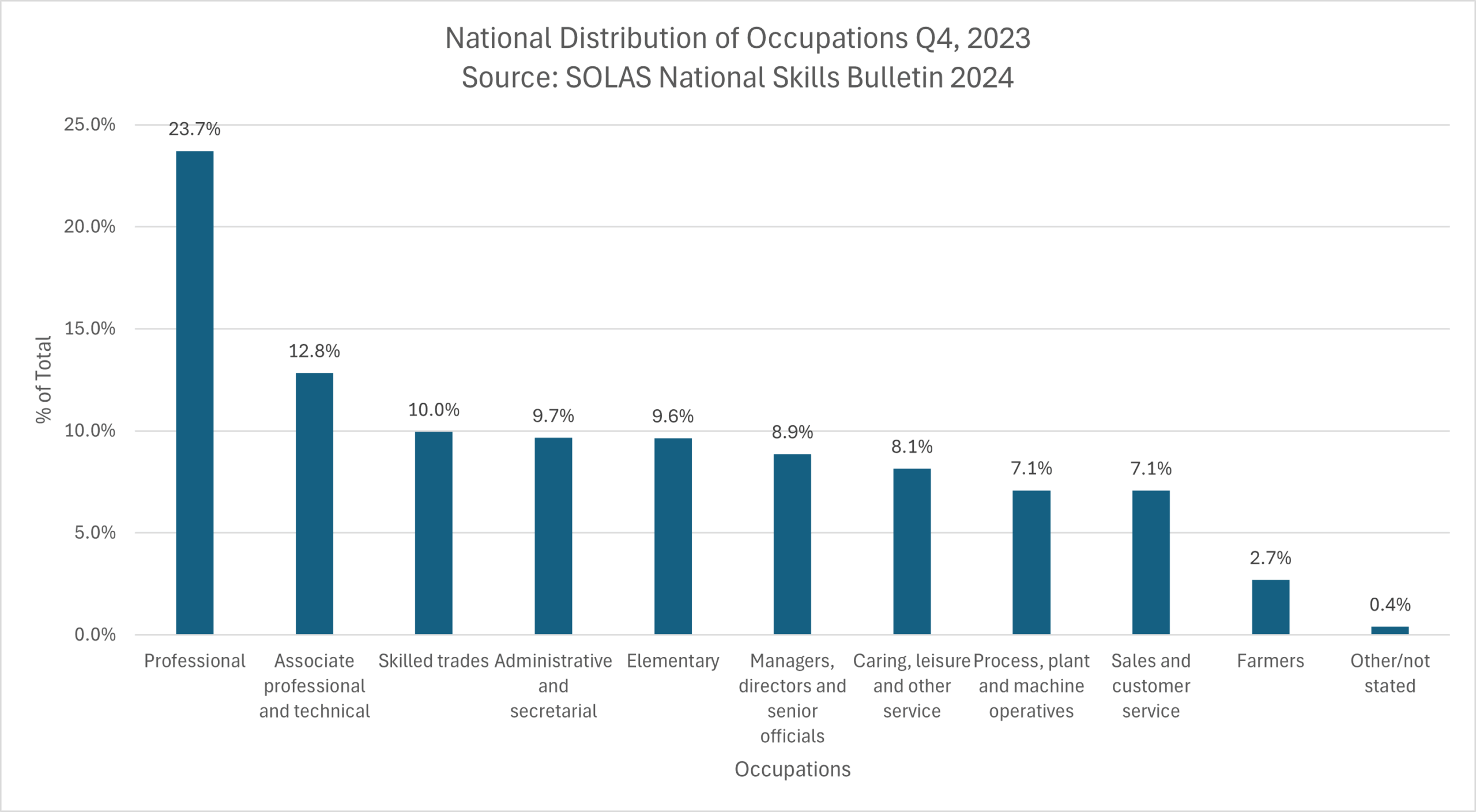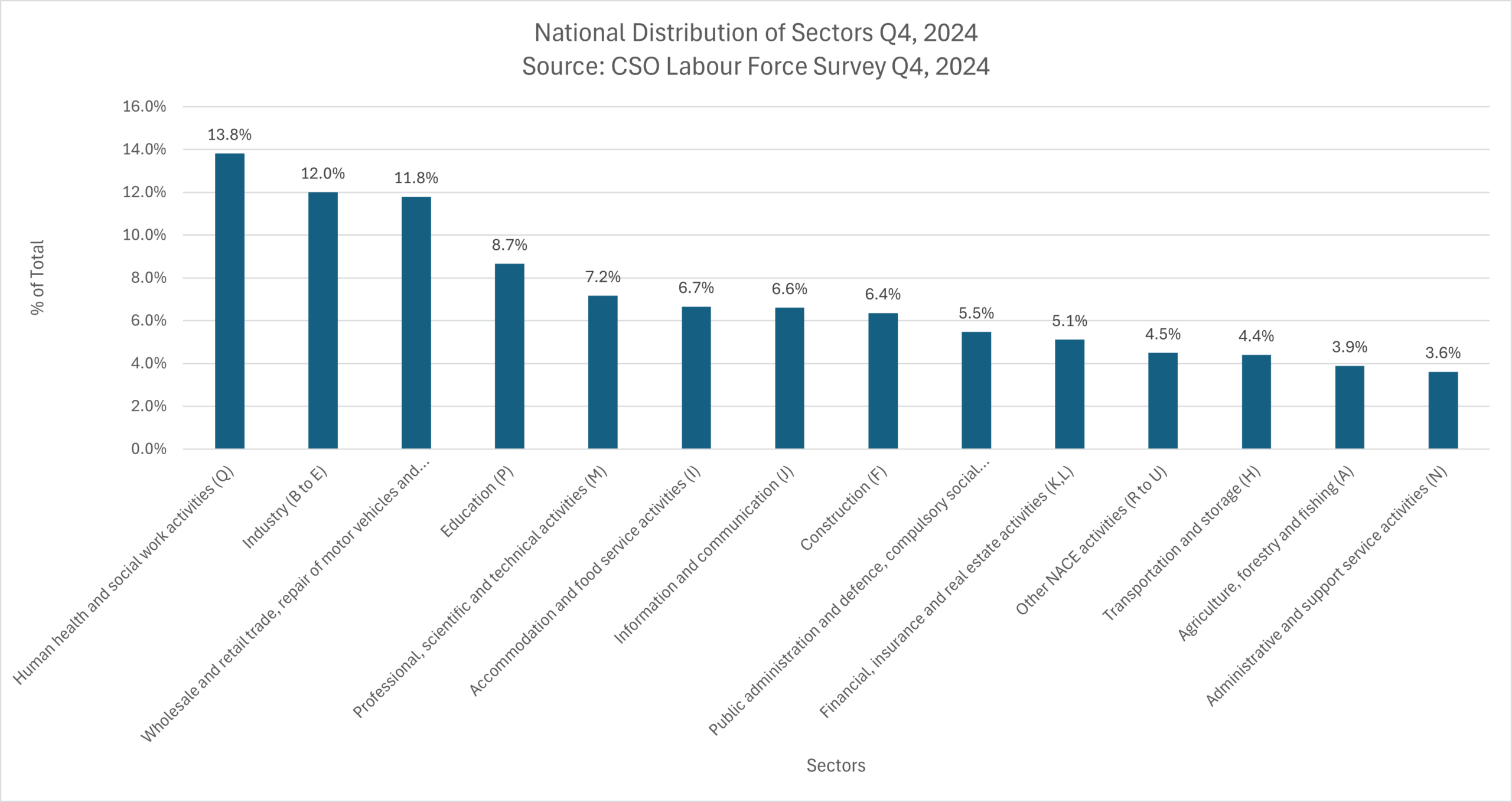Graduate Outcomes Survey: Sectors and Occupations – Introduction
Introduction
The Graduate Outcomes Survey is Ireland’s national survey of graduates and collects data on graduates’ main destination (such as employment or further study) about nine months after graduation. The Survey captures both graduates’ occupations and the sectors of the economy that they are employed in.
Occupation coding follows SOC 2010 and sector coding follows NACE Rev 2.0, which are in use in the Central Statistics Office for Vital Statistics, Household Surveys (including the Labour Force Survey) and the Census. Where it is possible, the Graduate Outcomes Survey aims to align with approaches in other national datasets.
The purpose of this report is to cross-reference occupations and sectors, to provide a greater level of insight into the kinds of jobs that graduates move into after graduation.
Occupations
CO 2020 categorises Occupations at a number of levels, starting with a broad grouping of just under 12 occupations, with further subgroupings at increasing levels of granularity. At the most granular level, there are thousands of occupation categories. However, this report only looks at the most broad category as it is the only category collected in the GOS survey. The broad level occupations, as provided in the Graduate Outcomes Survey, are given as follows:
- Managers, directors and senior officials
- Professional occupations
- Associate professional and technical occupations
- Administrative and secretarial occupations
- Skilled trades occupations
- Caring, leisure and other service occupations
- Sales and customer service occupations
- Process, plant and machine operatives
- Elementary occupations
- Postdoctoral researchers
- I don’t know/unknown
The SOLAS National Skills Bulletin 2024 found that the largest occupation groups are Professional Occupations, followed by Associate Professional and Technical Occupations, and Skilled Trades SOLAS, 2024, p8). The SOLAS analysis shows that high skilled occupations (Professional Occupations, Associate Professional and Technical Occupations and Managers, Directors and Senior Officials) accounted for approximately 45% of the total national workforce.

This HEA report provides two sections on occupations. The first deals with occupations, broken down by Programme Type, Field of Study and year. The second gives a further breakdown of occupations into economic sectors.
Sectors
NACE sector categories are also defined at a number of levels, starting with a high/broad level of just under two dozen sectors. The Graduate Outcomes Survey collects data at the broadest levels of sector only. The broad level sectors, as provided in the Graduate Outcomes Survey, are given as follows:
- Agriculture, forestry and fishing
- Industry
- Construction
- Wholesale and retail trade
- Transportation and storage
- Accommodation and food service activities
- Information and communication
- Financial, insurance and real estate activities
- Professional, scientific and technical activities
- Administrative and support service activities
- Public administration and defence
- Education
- Human health and social work activities
- Other
- I don’t know
The Central Statistics Office (CSO) collects data on sectors of employment through the Labour Force Survey. In quarter 4, 2024, the largest single employment sector was Human Health and Social Work, followed by Industry, and Wholesale and Retail Trade.

This HEA report provides two sections on sectors. The first gives a further breakdown of economic sectors into occupations. The second deals with sectors, broken down by Programme Type, Field of Study and year.